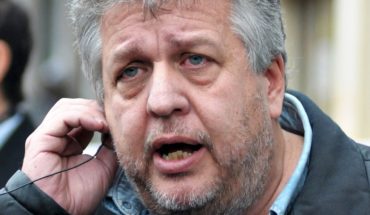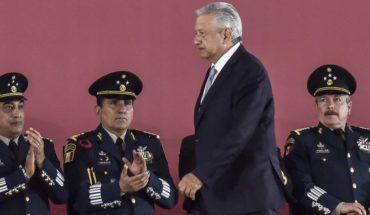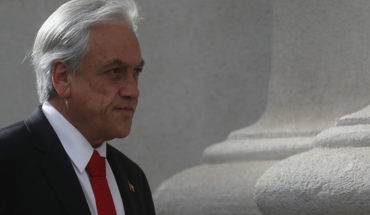On the sidewalk of 58th Street, near Brooklyn’s South Brooklyn Naval Terminal — one of five boroughs that make up one of the world’s most famous cities — people wait stiffly. Although most wear jackets, hats, gloves, boots and under all that thermal clothing, the morning of 0 degrees and the thermal sensation of -6 six hits without too much mercy. The cold scares even the desire to chat. Silence is what predominates.
People wait for a free test to find out if they are infected with COVID-19 takes two to three hours at this site (in others it exceeds six) although collecting the sample does not take more than five minutes. And then comes another wait, that of the results: 48 to 72 hours for the positive or negative to reach the email.
In the same city, but in a different district – Manhattan – lines also abound, although of a different type. Outside the popular pizza restaurant “John’s of Times Square” people wait impatiently for a place inside the establishment. Here the cold does not scare away the talk. On the line there is everything: from young people joking to couples of tourists taking photographs. The only requirement to enter the premises, in addition to patience, is to show the certificate that proves that the person has applied the complete COVID vaccines.
And a block away, one more row: that of the famous “Empire” cinema. Dozens of people are waiting to enter to see the film of the moment, Spider-Man No Way Home, which in its first weekend has grossed more than 200 million dollars in North America. As if that were not enough, the giant screens on the corner of the 8th and 4th already announce the imminent premiere of Matrix 4 for this Wednesday 22, the other great blockbuster of December.
Thus, winter finds a New York City divided in two. On the one hand, there is a growing fear of the spread of COVID-19 driven by the omniron variant; but on the other, there is fear of the impact that would bring to curb economic and tourist activity if the closure of businesses is privileged to curb infections.
“We have to move fast to find solutions as a city. The spread is real, but stopping economic activities is not a desirable scenario. Not at least now,” New York Mayor Bill de Blasio said.
The President of the United States, John Biden, announced in a message addressed to the nation the reinforcement of the health strategy with actions such as expanding hospital capacity, promoting the distribution of masks and COVID tests in isolated places, increasing the detection posts that already total more than 20 thousand in the country and accelerating the application of third doses … but nothing that involves stopping or suspending a business, event or activity.
The situation that the official data reveal, without nuances, is critical. On December 21, 23,000 new COVID infections were confirmed in new York alone in the state. For the fourth day in a row it is a new record. The average number of infections, in general, has risen more than 90% in December and the rate of hospitalizations among unvaccinated people doubled in less than four weeks.
The streets reflect the growing fear of contagion. At the 80 free public COVID testing sites located in New York, large lines are reported when until two weeks ago they were deserted. For example, at the booth located in the “MedRite Urgent Care” clinic in the neighborhood known as “Park Slope” in Brooklyn, the line reached up to 100 people. The waiting time, with temperatures of zero degrees, exceeded six hours according to what the staff in charge of the post said. Political Animal.
The main pharmacy chains in the city and in the country, Walgreens and CVS, announced that they have problems supplying their shelves with a greater number of rapid tests, in the face of what they called “an unprecedented demand”. Getting one of them in one of its establishments is an almost impossible task.
Through the social networks of the different colonies abound the messages of neighbors asking for waiting times in each test site to choose one that is less congested. The city announced that it plans to increase the number of free testing booths to 120 by the weekend in an effort to streamline the processes.
The government has also strengthened emergency calls for people to get vaccinated, but now with the clear warning that omniron can put those who are not immunized at serious risk. Unlike what happens in Mexico and other countries, in the United States people can get vaccinated even at their local pharmacy and choose if they prefer Moderna, Pfizer or Johnson. But many have not wanted to do so.
However, the rise of the new wave combined with the fear of getting sick and having to isolate seems to be encouraging the undecided. For example, in the complex installed by the New York Department of Health at the Brooklyn Naval Terminal, two thousand people were vaccinated in December, twice as many as last month.
The process, as he was able to verify Political Animal, is simple and fast. An appointment can be scheduled through a website to speed up registration, but if you prefer, just arrive and show an ID for an assistant to capture the data. The entire procedure, including the 15 minutes of rest after the vaccine or the booster, takes no more than an hour. The vaccine is free and it does not matter if you are a resident or not of this city, or even if you are an immigrant or a passing tourist.
In an effort to boost immunization, Mayor de Blasio announced the relaunch of a strategy that had already been launched last May: a $100 bonus, but this time, for all those who get the booster dose, as complementary immunization is called in this country.
Between follow or stop
“Stopping everything is not an option we are considering…” it is the phrase that Mayor de Blasio has uttered, and with which most of the vendors, merchants, workers, waiters and in general the population of New York agree. “We’re just recovering,” says Luisa, an employee at a supermarket located on Fifth and Union Street in Park Slope.
Follow or stop… privilege health or the economy. The city is battling in this contradiction. The game, for now, seems to be advantaged by the bet to try to keep things going, not to close deals, not to limit quotas. Nor restrict movement on the streets or classes in schools. Nothing like those almost total closures that other nations such as Belgium or the Netherlands have announced.
Today’s #COVID19 numbers:
• 12,988,773 doses of vaccines have been administered
• 200 new hospitalized patients
• 9,297 new cases https://t.co/5pOXCPRofZ
— New York City (@nycgob) December 21, 2021
“This is not March 2020. Today we have more than 200 million people fully vaccinated. We are better prepared to face the pandemic,” President Biden repeated on at least three occasions.
What has been asked to emphasize is two measures that were already in New York for months, but that had been relaxed: the use of mandatory masks in closed premises, and the presentation of the complete vaccination card to stay or even to enter an establishment. In the famous museums of the New York capital, for example, it is warned that the entry and permanence of visitors depends on the unrestricted fulfillment of these two requirements.
Schools have not stopped activities either. Neither elementary schools nor higher education campuses such as Columbia University or the City University of New York (CUNY) have stopped their end-of-semester activities, although warnings of new infections among students and professors have multiplied. The bet goes for the self-isolation of those infected, and tests for all those who have been in contact.
But the decision to continue despite the infections in some cases has already hit a wall. For example, in the famous Broadway theater circuit, the temporary suspension of 31 works that were on display has been announced, after the infections spread among the casts and technical staff. “The Lion King,” “Hamilton” and “Aladdin” are among the shows that have been canceled.
The musical “The Nutcracker” by the prestigious New York City Ballet, also suffered a major setback. The performance scheduled for Tuesday afternoon at the iconic Lincoln Center was suspended after the positive contagion of members of the production was confirmed and there is no certainty that it can continue.
The famous New Year’s Eve celebration in Times Square, which draws tens of thousands of people to midtown Manhattan each year, also hangs in the balance. Mayor de Blasio stated that the continuation of the event was being seriously analyzed and acknowledged that canceling it is one of the possibilities. Until Tuesday, preparations were still underway.
National Ice Hockey League (NHL) games have already been suspended, at least until December 25, after numerous infections were reported in several teams. Even the preparation and participation of variPlayers for the upcoming Winter Olympics (held in February in China) are at risk.
The chain of cancellations even reached the gala in which Eric Adams, the elected mayor of New York, would take office in succession to De Blasio, who is rumored to seek the governorship of the state by 2022. The event would be held before the end of the year, but the decision of the elected candidate’s team was to cancel it to avoid the exposure of those attending the event behind closed doors.
“Continue as far as you can without closing…” that’s what Adan, a waiter at a famous chain of coffee shops on Seventh Avenue north of Brooklyn, says. That seems to be the bet not only of them, but of the authorities of the city and the whole country.
What we do at Animal Político requires professional journalists, teamwork, dialogue with readers and something very important: independence. You can help us keep going. Be part of the team.
Subscribe to Animal Político, receive benefits and support free journalism.#YoSoyAnimal





